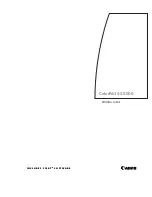
Link
The physical connection between an N_Port and
another N_Port or an N_Port and an F_Port. A
link consists of two connections, one to transmit
information and one to receive information. The
transmit connection on one node is the receive
connection on the node at the other end of the link.
A link may be optical fiber, coaxial cable, or shielded
twisted pair.
E_Port
An expansion port on a switch used to make a
connection between two switches in the fabric.
6.2.2 Fibre Channel Topologies
Fibre Channel supports three different interconnect topologies:
•
Point-to-point (Section 6.2.2.1)
•
Fabric (Section 6.2.2.2)
•
Arbitrated loop (Section 6.2.2.3)
______________________
Note
_______________________
Although it is possible to interconnect an arbitrated loop with
fabric, hybrid configurations are not supported at the present
time, and therefore not discussed in this manual.
6.2.2.1 Point-to-Point
The point-to-point topology is the simplest Fibre Channel topology. In a
point-to-point topology, one N_Port is connected to another N_Port by a
single link.
Because all frames transmitted by one N_Port are received by the other
N_Port, and in the same order in which they were sent, frames require no
routing.
Figure 6–1 shows an example point-to-point topology.
6–6 Using Fibre Channel Storage
















































